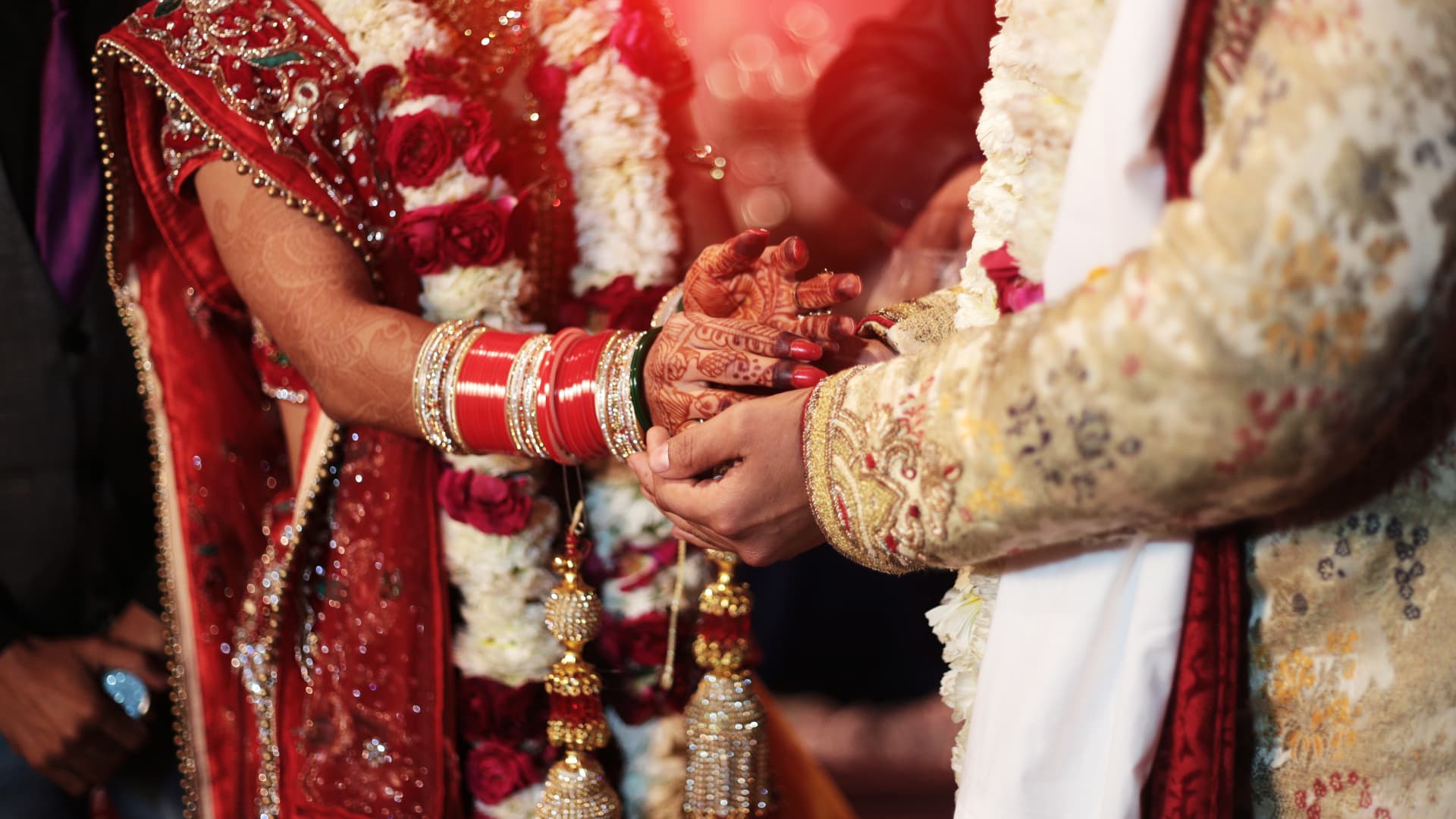Indian weddings are big business. But some of them may not be quite so big this year as they once would have been.
The celebrations are famously known for being week-long extravagant affairs filled with elaborate religious ceremonies, glamorous outfits, singing and dancing, and of course lots of jewelry.
Many couples in India get married from November to February, which is viewed as an auspicious period in Indian culture.
According to Nikkei Asia, trade body Confederation of All India Traders (CAIT) estimated that 3.2 million weddings would happen during November to December of last year.
Celebrations in that month would have generated 3.75 trillion rupees ($46 billion) for businesses in the wedding industry, a steep increase from 2.5 trillion rupees in 2019, Nikkei Asia reported based on data from CAIT.
It’s therefore no surprise that lavish Indian weddings often draw up to 1,000 guests — and that comes with a hefty price tag.
However, the mindsets of millennials in India have changed, and many are starting to believe that less is more.
Couples are moving away from “big, fat” Indian weddings toward intimate celebrations with a slimmer guest list, said Tina Tharwani, co-founder of Mumbai-based wedding planning company Shaadi Squad.
They have chosen to give guests a more personalized experience at the event, rather than making it a competition with their peers on who can throw a biggest wedding, Tharwani told CNBC.
Smita Gupta, founder of Delhi-based wedding planner Wedlock Events, agreed.
“The success of weddings obviously depends on the guests, but it’s not the number of guests nowadays,” Gupta said. “They are more worried [about] the guest experience.”
“If you call 600 guests to your wedding, it’s just extra money that you’re paying,” said 29-year old Manika Singh. She is getting married in December 2023 and plans to invite only up to 250 guests for the main celebration, which will be held at the Jim Corbett National Park in Uttarakhand.
Renting the venue for two days will set the couple back by 1,500,000 rupees ($18,400), or about 600,000 rupees ($7,400) more than what it was before the pandemic and higher inflation.
Feeding people isn’t cheap
But cutting her guest list came with a caveat.
To accommodate her parents’ desire for a big wedding, Singh will also have a lunch reception for 300 guests at the family home a day before.
“You won’t even know half of the people, they’re just acquaintances of your parents,” she said, adding that this is a common practice that couples often succumb to to pacify their families.
Despite couples trimming the size of their weddings, they’re spending just as much. Even with a shorter guest list, spending big on the venue, food and decorations remains the norm, Gupta said.
Singh agreed, adding that inflation has driven up the cost of food, and rice prices “have gone through the roof.”
Although India’s retail inflation dipped from 5.88% in November to 5.72% in December, cereal and milk prices continue to rise, according to Reuters.
Singh anticipates food being the costliest item at both the lunch reception and wedding celebration in December.
That affirmed her decision to scale down the number of guests at her wedding but spend more on her outfit and jewelry instead, which is costing her 700,000 rupees ($8,600)
“More people means less luxury at your wedding,” Singh said, “We can splurge on that instead of feeding people.”
Pricey gold? No problem
Gold prices hit eight-month highs on Tuesday, with spot gold trading at $1,877 an ounce.
But that isn’t stopping soon-to-be married couples from buying gold for their big day, Ramesh Kalyanaraman, executive director at Kalyan Jewellers said.
High costs haven’t necessarily deterred people from making big purchases, but they may wait a couple of weeks to see if prices drop, Kalyanaraman said. “It is not a drop” in sales, he said, but “a delay in their purchases.”
And that was no different during Covid.
Kalyanaraman said the ticket size for wedding jewelry was much higher during the pandemic, because people were unable to spend money on entertainment or rent big marriage halls due to government restrictions.
“Gold jewelry is not a fashion accessory; it is actually a part of every custom and ritual,” he said.
Kalyanaraman said that in some Indian cities, parents start buying gold for their daughters from birth and will continue adding to the collection as they grow older. Many of those pieces are then worn on their wedding day.
Singh said she has a different stance and won’t be decked out in expensive jewelry. She will purchase only one set of new jewelry, and use another from her engagement ceremony. For the rest of it, she is “just going to wear fake jewelry.”
